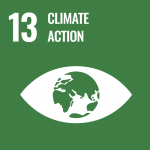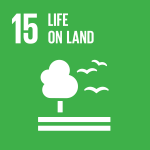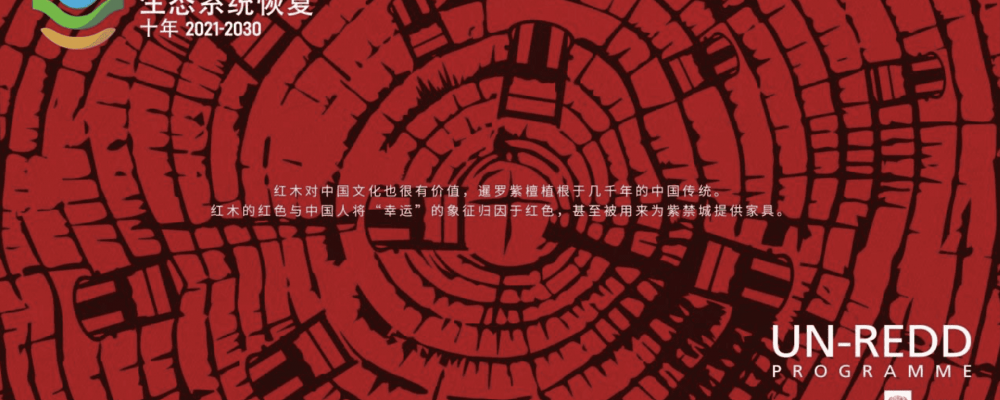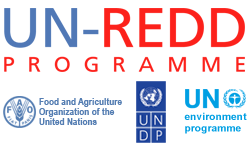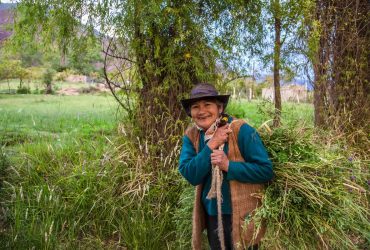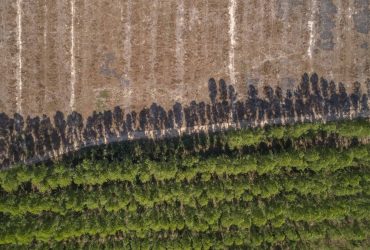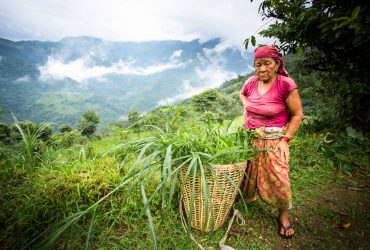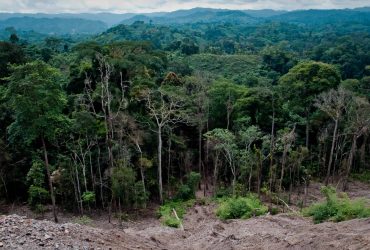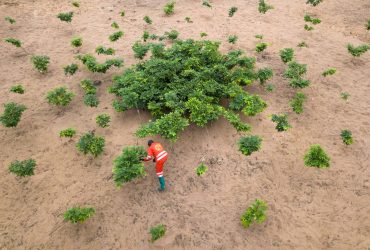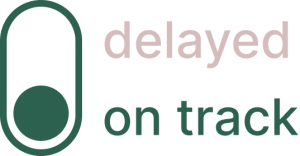


UN-REDD Sustainable Forest Trade in the Lower Mekong Region (Lower Mekong Initiative) Addressing Forest Crime through Improved Governance in the Lower Mekong Region
*As assessed against the workplan following the no-cost extension granted in January, 2023 Picking up on the momentum from 2021, the Lower Mekong Initiative delivered on a number of important results and saw the first physical regional meeting take place in 2022, following the ease of COVID-era restrictions on in-person meetings.
Regional dialogue and analysis: Wood products trade in the Lower Mekong region has undergone significant changes over the last decade. One of the most dramatic changes was a plunge in exports of primary wood from natural forests, and a corresponding increase in production and trade from plantations, particularly from Viet Nam and Thailand. On the other hand, wood processing demand from the region was supplied by imports or primary products from other “high risk” regions (Africa, Pacific). Over the last decade, exports of primary wood products from the region have been overwhelmingly heading to China. Processed wood product exports are mainly headed to extra-regional destinations, including the United States, EU and Japan, countries with stricter requirements for legality and sustainability. Proximity of the region to China presents opportunities, in terms of the significant market size, but also threats, in terms of the historical illegal cross border trade and less stringent market requirements for sustainability.
Through the initiative’s first face-to-face regional dialogue in October, 2022, the circumstances of each country’s forest products value chains and their trajectory towards achieving transformational change were discussed. The vision for transformational change is a shift in forest product value chains from systems that support deforestation and forest degradation, illegal logging and trade to systems that support sustainable management of the region’s forests and legal and sustainable forest product value chains.
Verification of timber legality and sustainability and smallholder engagement: Smallholders and micro, small and medium enterprises (m-SMEs) make up 80 – 90 percent of forest enterprises and produce the majority of timber in the Lower Mekong region. Yet, they often remain de facto excluded from legal and sustainable supply chains due to their informal status and lack of knowledge of requirements for legality and sustainability. In 2022, substantial support was provided to develop and strengthen voluntary certification and CITES permitting systems. An important aspect of this work was to facilitate the integration of smallholders and communities into legal and sustainable forest product supply chains by adapting, piloting and promoting adequate legal requirements and certification standards, and by building corresponding capacities including in traceability. During the reporting period, over 200 individuals underwent capacity building (28 percent women) and three initiatives were launched to pilot legal timber harvests in community forests. Smallholder engagement was improved by emphasizing there are different pathways for smallholders to engage in these supply chains, and useful steps can be taken that are common to all pathways, such as supporting group formation, improving access to finance and enabling smallholders to advocate for easing regulations to create a more “smallholder-friendly” regulatory framework.
Also in 2022, enterprise incubation programmes were launched in Thailand and Viet Nam. This work is supporting m-SMEs and forest groups to increase their capacity to execute and scale up sustainable business models and attract private finance. In Thailand, the e-Tree platform was launched in collaboration with the Royal Forestry Department, allowing smallholders to generate online documentation on evidence of timber legality and source of origin.
Strengthening data and monitoring: Monitoring the trends of unsustainable or illegal forest activities is challenging without taking a proxy approach. On the other hand, using multiple sources of data can help understand the trends in forest, forest management, forest products production and trade, and thereby glean insight into the trends of legal and illegal forest activities. There are also multiple sources of data and approaches for building an understanding of social and environmental impacts in the forest sector.
The use of global and regional datasets, platforms and tools can support this process. In 2022, an online resource for understanding and tracking environmental and social trends in the forest sector was launched, which compiles a set of global and regional platforms, datasets and tools to support the exploration and monitoring of environmental and social outcomes in the forest sector. In addition, 2022 saw the first two in a series of regional webinars, featuring best practices, innovations and initiative experiences related to data and monitoring to support sustainable forest trade and management in the Lower Mekong region.
In the region, countries are interested in developing capacities to monitor forest changes in ‘near real-time’ which can make monitoring and forest law enforcement efforts much more effective. Under the Lower Mekong Initiative, a near-real-time tool for the region was developed within SEPAL. The Change Alert application allows users access to a synthetic3 time series algorithm to detect changes at a user defined frequency, such as changes in the past month or two weeks; . The application allows users to tailor parameters to local conditions which can reduce false detection and overestimation of changes. The Deforestation Alert Analysis application helps verify the change alerts using high resolution satellite imagery, such as NICFI planet daily data or monthly mosaics. The output can be exported in common formats for further distribution and visualization on a web map server. This allows integration in existing national systems, and outputs can be exported into a format suitable for the end user, for example for forest rangers. Both applications are being tested in Lower Mekong countries. Initial results are showing promise, especially for detecting changes in evergreen forests.
In addition, the Lower Mekong countries are working to strengthen information and information systems linked to social and environmental trends in forests. In 2022, for example, Thailand continued to work with stakeholders to move from design of its SIS towards operationalization; Cambodia began collecting data and mapping environmental and social parameters to complement analysis of deforestation and forest degradation in four target provinces; and, Lao PDR concluded an assessment on the availability and opportunities for strengthening data on forest and land tenure.
Behavioural change campaigns: The 2022 Knowledge, Attitude, Practices (KAP) Survey on Forest Crime conducted in five Lower Mekong countries and in China shows that only half of the respondents care enough to act against illegal logging and illegal forest trade. Across the region, the KAP scores were lower than 60, indicating a need for interventions to bridge the gap from low awareness to enhanced knowledge, and from apathy to interest and concern on forest crime issues.
These results and further analysis were published in a handbook, “Communications handbook on forest crimes based on Knowledge Attitude and Practices (KAP) survey results,” launched during the 2022 regional dialogue and through various country-level meetings. The handbook guided the development of national campaign plans in Cambodia, China, Lao PDR, Thailand and Viet Nam. Myanmar is still in the process of drafting.
With nine out of 10 Chinese consumers intent on purchasing rosewood in 2023, a 20 percent increase from 2022, the China campaign ‘Forest for Life’ shifted its focus on reducing demand for rosewood by 3 synthetic data is information that is artificially manufactured rather than generated by real-world events making more people care about forests. The campaign was soft launched in March, 2022 and has been engaging young people through social media. China Daily, China Financial Times, Asia Pacific Times and other national media outlets have covered the campaign, garnering about 200,000 impressions. In addition to guiding the campaign strategies, the survey results provided an evidence base for monitoring and advocacy purposes by establishing key performance indicators. These indicators are captured in a Monitoring & Evaluation Framework that will keep track of the campaign progress over time.
Promoting Finance for Sustainable Forest Use: Many high-risk or even destructive forest activities would not be able to take place without external finance. These activities require capital not only to buy equipment and machinery, but also to pay for the costs of harvesting, processing and transporting the finished products to the markets. This is facilitated by banks through lending or credit provision and underwriting services. Similarly, shifting to more sustainable land use practices requires capital, at least in the stages during the transition. However, due to the heightened risks faced by lenders, many banks are not willing to invest or lend in forestry activities, and many banks have insufficient capacity to discern between what is sustainable and what is unsustainable. In 2022, the Lower Mekong Initiative developed a regional financial collaboration forum. The forum is designed to raise awareness of illegal logging and forest conversion among capital providers operating in the region and to increase capacity of lenders to redirect capital to more sustainable practices.
In parallel, the Lower Mekong Initiative analysed the main financial actors involved in timber, pulp and paper and rubber wood value chains in the region. This will help to identify financiers that are knowingly or unknowingly financing deforestation and unsustainable forest activities. The exercise will, in turn, support the forum to target specific financiers for engagement with offers of support and capacity building, where necessary.
Noting the implications of COVID-19 related constraints to the initiative, and the shortened initiative duration due to the delayed start up, a total of two years’ no-cost extension was granted, enabling the initiative to achieve completion, and in effect, extending the initiative’s lifetime until the end of 2023.
The COVID-19 pandemic’s impact was reduced significantly in 2022, allowing for the first face-to-face regional meeting to take place in October, 2022, with COVID-19 measures in place to ensure the safety of participants. Notwithstanding, there is no denying the loss in terms of opportunity for regional and cross-border dialogues, due to restrictions from the pandemic. For a regional initiative, designed specifically to enhance regional collaboration, the timing of the pandemic could not have been worse.
Political turmoil in Myanmar has all but removed the country from activities since the first half of 2021. In 2022, the Lower Mekong Initiative made pointed efforts to continue supporting communities in sustainable forest management, specifically with the provision of training and studies and pilots on forest management and harvesting planning.
Gender balance and women’s participation were measured and promoted in meetings. Women’s participation was recorded at 37 percent at the face-to-face regional dialogue held in October, 2022, but more substantively, women participants from the region played key roles in presenting, offering comments and demonstrating active engagement. In Thailand, an interview under the Thai communication campaign showed that female officers play a significant role in conflict resolution to mediate with local people on forest encroachment in community forests.
Social inclusion has been a larger focus, as data platform development and data transparency interventions are designed to promote inclusive access to information. For example, in Myanmar, social and environmental impact monitoring is being incorporated into procedures for legal timber production.
As mentioned in the section above, a significant focus of the initiative is to facilitate smallholder and community access to legal and sustainable forest product value chains. This has been achieved in the form of trainings to community stakeholders and the development of tools that institutionalize smallholder needs and perspectives into forest certification and legal procedures related to sustainable forest management and harvesting, among others. In Thailand, the development of principles, criteria and indicators for the SIS consider gender and social inclusion, with a number of proposed indicators to be disaggregated for local and ethnic communities, women, youth, the elderly and other vulnerable groups. At the regional level, an effort was made to identify data and tools related to gender in the development of the online resource. Although there is a lack of dedicated platforms on the topic regionally, four resources with gender information were included, such as Servir Mekong and UN Women’s ‘’Women Count’’ portal.
The initiative works closely with the governments of the Lower Mekong countries (with the exception of Myanmar), including, but not limited to forestry agencies, and with stakeholder partners operating in each country. In 2022, the initiative strengthened strategic engagement including with the International Tropical Timber Organization (ITTO), focusing on regional forest trade statistics and trends; Global Green Supply Chain (GGSC) from China, which conducted a survey on the trends of Chinese timber buyer companies; CITES Secretariat, to support CITES implementation and address ongoing compliance processes under CITES; the Programme for the Endorsement of Forest Certification (PEFC), to support sustainable forest management through development or strengthening of forest management standards and promotion of compliance with legal requirements; Forest Stewardship Council (FSC), to foster networks between demand and supply sides of certified wood products markets, particularly between China and the Lower Mekong countries; The Center for People and Forests (RECOFTC), to build national capacities and enable community-based groups and smallholders access to legal and sustainable forest product value chains; and the World Wildlife Fund (WWF), to identify innovative sustainable models for timber production and trade for small and medium enterprises (SMEs), among others.
The activities under the initiative contribute to progress against SDGs 12, 13 and 15.

